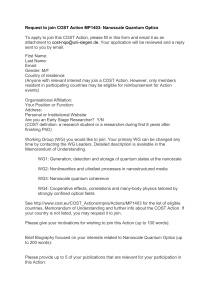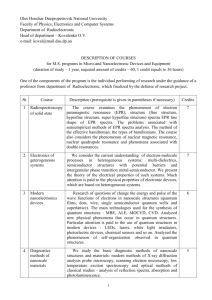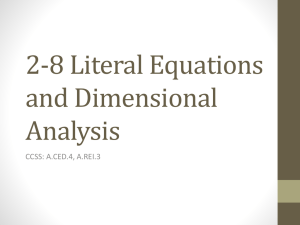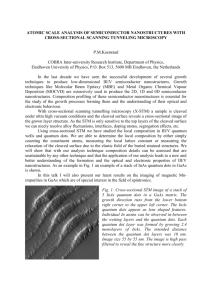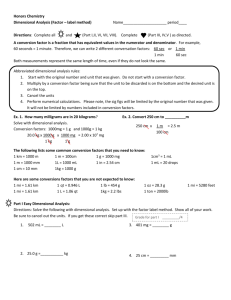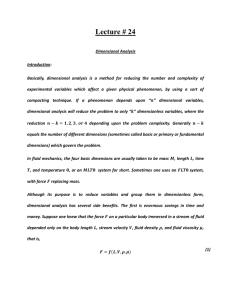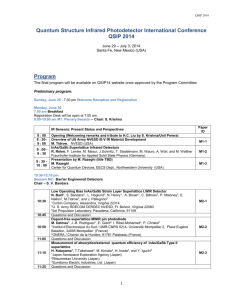Minh Binh Nguyen Talk Announcement
advertisement
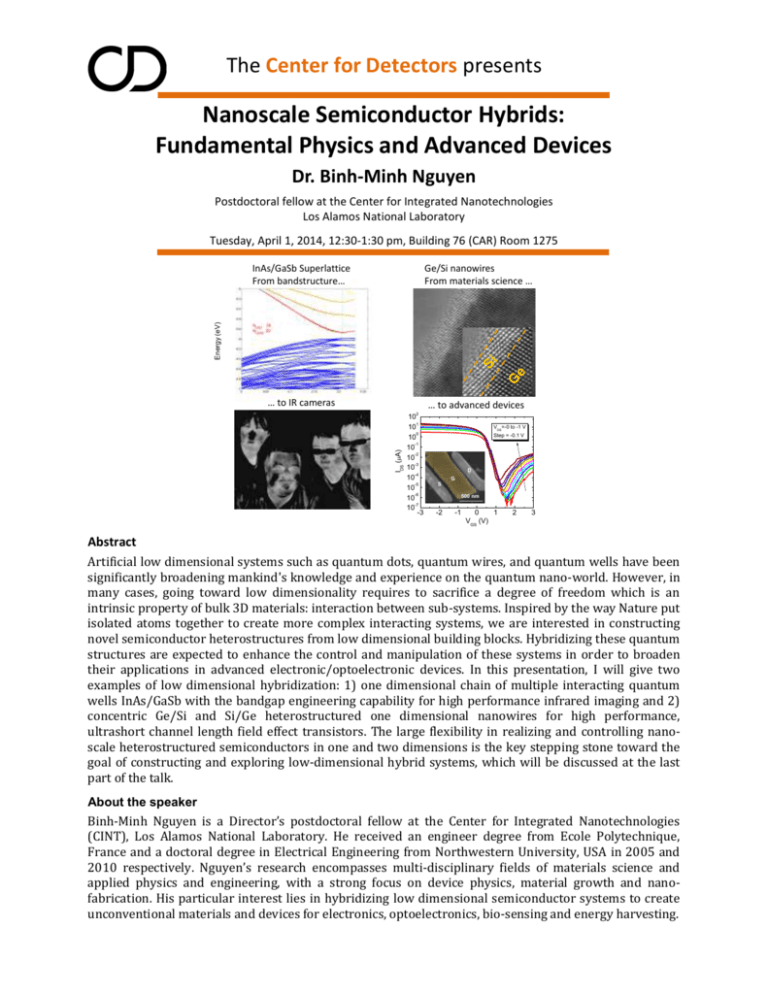
The Center for Detectors presents Nanoscale Semiconductor Hybrids: Fundamental Physics and Advanced Devices Dr. Binh-Minh Nguyen Postdoctoral fellow at the Center for Integrated Nanotechnologies Los Alamos National Laboratory Tuesday, April 1, 2014, 12:30-1:30 pm, Building 76 (CAR) Room 1275 InAs/GaSb Superlattice From bandstructure… Energy (eV) Ge/Si nanowires From materials science … … to IR cameras … to advanced devices IDS (A) 2 10 1 10 0 10 -1 10 -2 10 -3 10 -4 10 -5 10 -6 10 -7 10 -3 VDS=-0 to -1 V Step = -0.1 V D G S 500 nm -2 -1 0 1 VGS (V) 2 3 Abstract Artificial low dimensional systems such as quantum dots, quantum wires, and quantum wells have been significantly broadening mankind's knowledge and experience on the quantum nano-world. However, in many cases, going toward low dimensionality requires to sacrifice a degree of freedom which is an intrinsic property of bulk 3D materials: interaction between sub-systems. Inspired by the way Nature put isolated atoms together to create more complex interacting systems, we are interested in constructing novel semiconductor heterostructures from low dimensional building blocks. Hybridizing these quantum structures are expected to enhance the control and manipulation of these systems in order to broaden their applications in advanced electronic/optoelectronic devices. In this presentation, I will give two examples of low dimensional hybridization: 1) one dimensional chain of multiple interacting quantum wells InAs/GaSb with the bandgap engineering capability for high performance infrared imaging and 2) concentric Ge/Si and Si/Ge heterostructured one dimensional nanowires for high performance, ultrashort channel length field effect transistors. The large flexibility in realizing and controlling nanoscale heterostructured semiconductors in one and two dimensions is the key stepping stone toward the goal of constructing and exploring low-dimensional hybrid systems, which will be discussed at the last part of the talk. About the speaker Binh-Minh Nguyen is a Director’s postdoctoral fellow at the Center for Integrated Nanotechnologies (CINT), Los Alamos National Laboratory. He received an engineer degree from Ecole Polytechnique, France and a doctoral degree in Electrical Engineering from Northwestern University, USA in 2005 and 2010 respectively. Nguyen’s research encompasses multi-disciplinary fields of materials science and applied physics and engineering, with a strong focus on device physics, material growth and nanofabrication. His particular interest lies in hybridizing low dimensional semiconductor systems to create unconventional materials and devices for electronics, optoelectronics, bio-sensing and energy harvesting.

